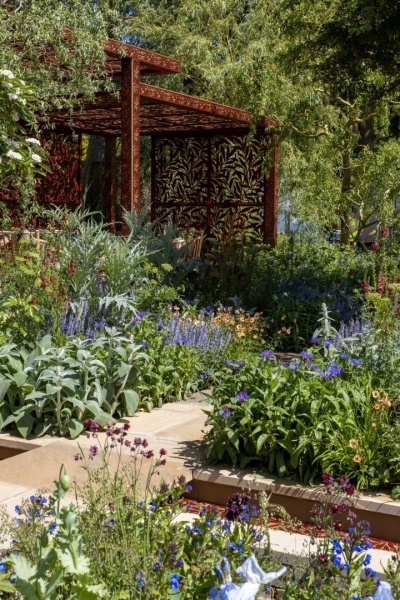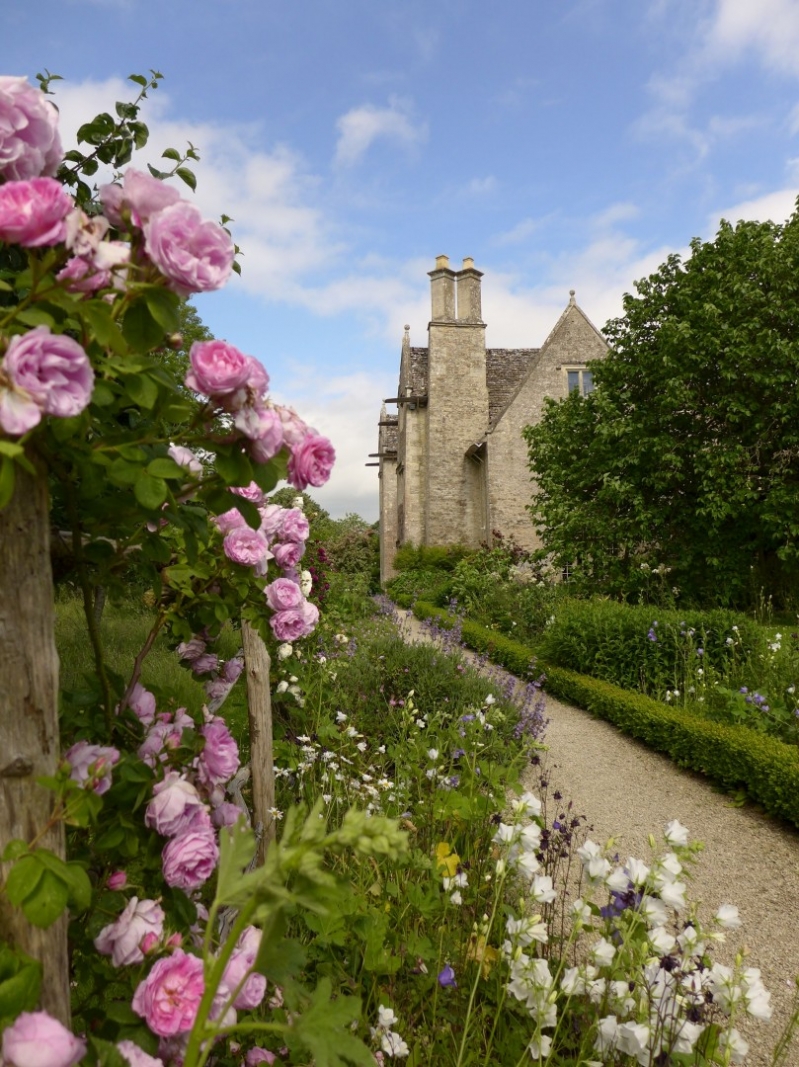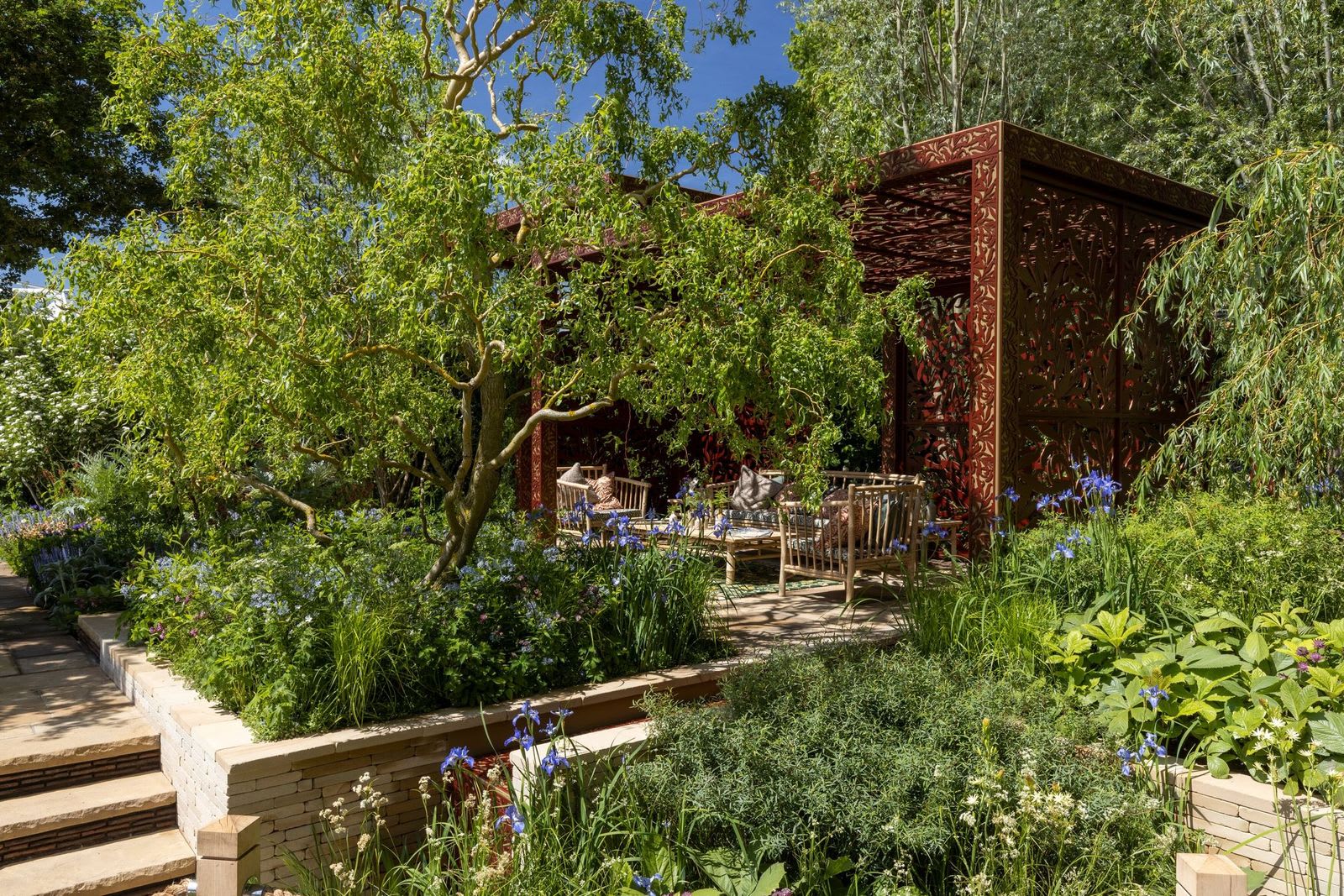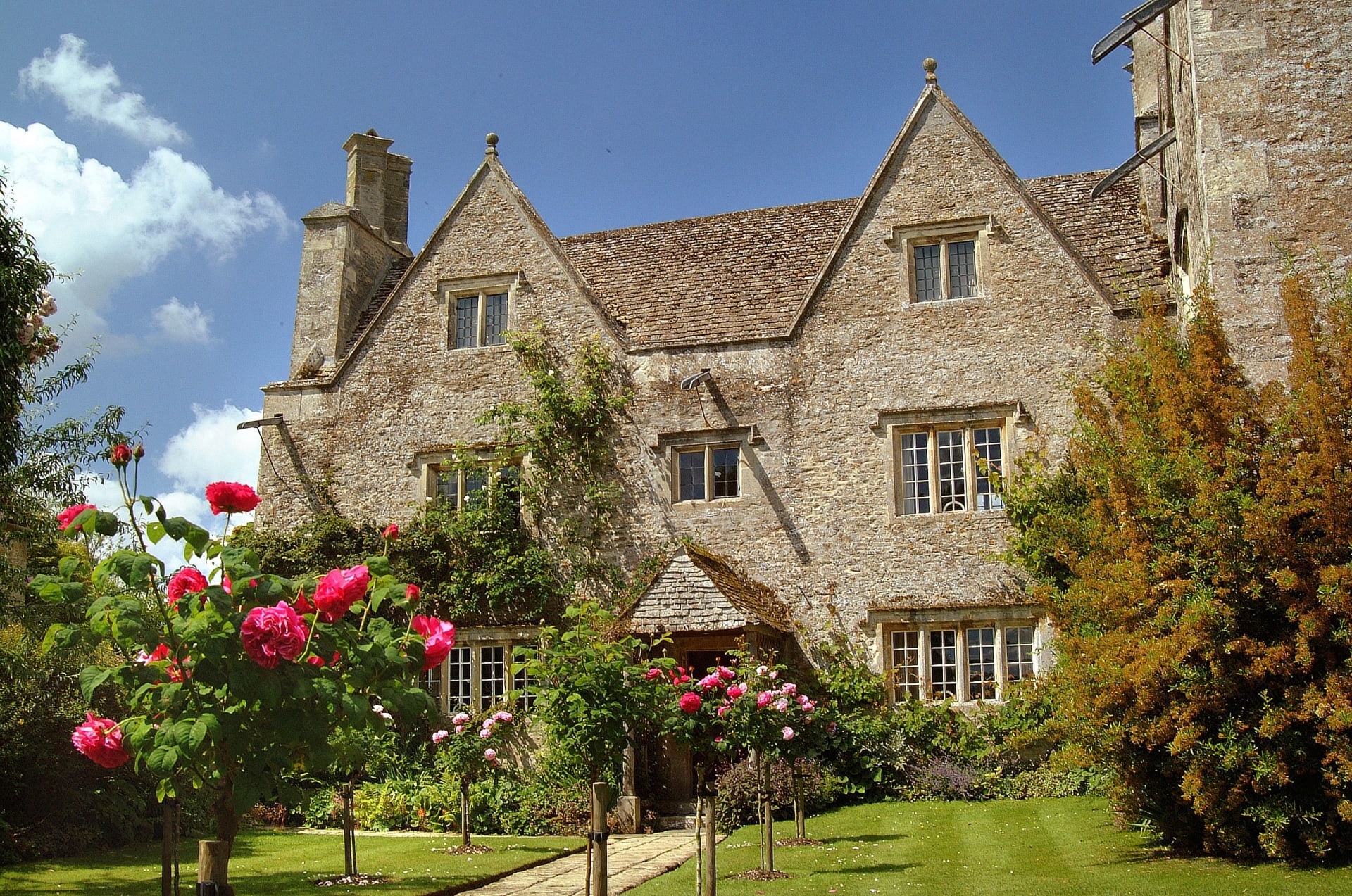Inspired by a visit to Kelmscott Manor, Ruth Willmott was awarded Gold at this year’s RHS Chelsea Flower Show for her Morris & Co show garden.
The garden was created as a tribute to the father of the Arts & Crafts Movement, William Morris who lived at Kelmscott Manor near Lechlade for 25 years. Built around 1600, of local Cotswold stone, Morris first viewed the property in 1871 and was immediately attracted to its unpretentious architecture, the local history and landscape surrounding the property. Kelmscott Manor fulfilled all his passions: history, nature, archaeology and romantic medievalism. The house provided Morris with enduring creative inspiration and was fundamental in formulating his views on his craft-based work, conservation, social democracy, and environmental issues.
 For designer Ruth Willmott, who had previously designed show gardens for RHS Chelsea, the Morris & Co garden was her most challenging to date; not only did the garden have to recognise Morris’ simple yet effective designs but Ruth also wanted to use inspiring modern-day artisanship of which William Morris himself would have approved. “This garden took three years to design and plan. It took around 18 months from my initial concept, collaborating with a structural engineer and then the metal worker to work up detailed construction drawings. The central pavilion, featuring posts and screens depicting Morris’s ‘Willow Boughs’ pattern, inspired by the willows growing around Kelmscott was an engineering challenge with its structural design and how it would be constructed using the minimum of fixings and maximising the panels of patterns. Designing a Chelsea garden which features water can also be challenging – it is always harder in practice to create within a garden constructed in such a short space of time. As water was a huge part of William Morris’s life with all his homes being near the River Thames and River Wandle, it was an essential element in this design. The three water channels featured represented the rivers that were a part of his life.”
For designer Ruth Willmott, who had previously designed show gardens for RHS Chelsea, the Morris & Co garden was her most challenging to date; not only did the garden have to recognise Morris’ simple yet effective designs but Ruth also wanted to use inspiring modern-day artisanship of which William Morris himself would have approved. “This garden took three years to design and plan. It took around 18 months from my initial concept, collaborating with a structural engineer and then the metal worker to work up detailed construction drawings. The central pavilion, featuring posts and screens depicting Morris’s ‘Willow Boughs’ pattern, inspired by the willows growing around Kelmscott was an engineering challenge with its structural design and how it would be constructed using the minimum of fixings and maximising the panels of patterns. Designing a Chelsea garden which features water can also be challenging – it is always harder in practice to create within a garden constructed in such a short space of time. As water was a huge part of William Morris’s life with all his homes being near the River Thames and River Wandle, it was an essential element in this design. The three water channels featured represented the rivers that were a part of his life.”
Other aspects of the design demonstrated more traditional arts and crafts methods, and these included the hand-made clay tiles and riven buff Yorkstone paving. A series of interconnecting pathways reflecting the design Morris used in his first wallpaper design ‘Trellis’ took people through the garden to the central pavilion.
 Ruth and her design team were part of an overall build team of nearly 60 people, including structural engineers, landscapers, metal workers, stone masons, willow weavers, specialist plant and tree nurseries and lots of volunteers. The lesser complicated element of the overall design, with Ruth’s naturalistic style of planting, was choosing the plants themselves. “Selecting plants for the Morris & Co design was relatively easy and inspirational. Morris took many of his designs from the English countryside, hedgerows and garden plants. He was also an environmentalist, and he chose plants to encourage bees, birds and wildlife; this is something I favour, too. I chose plants based on the colourways of Morris’s ‘Strawberry Thief’ which has a palette of earthy reds, apricot tones accented with whites, blues and restful greens. I also incorporated trees used in his designs, namely willow and hawthorn. The trees and hedging were selected to provide habitat for birds whilst referencing the recurring bird motif in both ‘Trellis’ and ‘Strawberry Thief’ with single flowering shrubs and herbaceous planting for bees. I mixed cottage garden plants such as Roses, Iris, Peonies, Dianthus, Geranium, Foxgloves along with shrubs such as Cotoneaster, Berberis and Viburnum.”
Ruth and her design team were part of an overall build team of nearly 60 people, including structural engineers, landscapers, metal workers, stone masons, willow weavers, specialist plant and tree nurseries and lots of volunteers. The lesser complicated element of the overall design, with Ruth’s naturalistic style of planting, was choosing the plants themselves. “Selecting plants for the Morris & Co design was relatively easy and inspirational. Morris took many of his designs from the English countryside, hedgerows and garden plants. He was also an environmentalist, and he chose plants to encourage bees, birds and wildlife; this is something I favour, too. I chose plants based on the colourways of Morris’s ‘Strawberry Thief’ which has a palette of earthy reds, apricot tones accented with whites, blues and restful greens. I also incorporated trees used in his designs, namely willow and hawthorn. The trees and hedging were selected to provide habitat for birds whilst referencing the recurring bird motif in both ‘Trellis’ and ‘Strawberry Thief’ with single flowering shrubs and herbaceous planting for bees. I mixed cottage garden plants such as Roses, Iris, Peonies, Dianthus, Geranium, Foxgloves along with shrubs such as Cotoneaster, Berberis and Viburnum.”
As part of the original design planning, Ruth and her team had to factor in where the garden would go after the show. “We wanted to recycle as many elements of the Morris & Co show garden as possible. I worked closely with my Sustainability Director Joey Tabone who found locations with a historical connection to William Morris where there were teams of willing volunteers to care for it long-term. Elements of the garden went to three community gardens in Islington’s Packington Estate regeneration project, in collaboration with the Arc Centre Gardening Collective. This newly redeveloped estate was chosen as it is located around the corner from the site where Morris’s prints were first produced by Jeffrey and Co over 160 years ago.”
If you were not able to visit RHS Chelsea Flower Show 2022 and see the Morris & Co garden in situ, Kelmscott Manor is open to visitors until the end of October.








